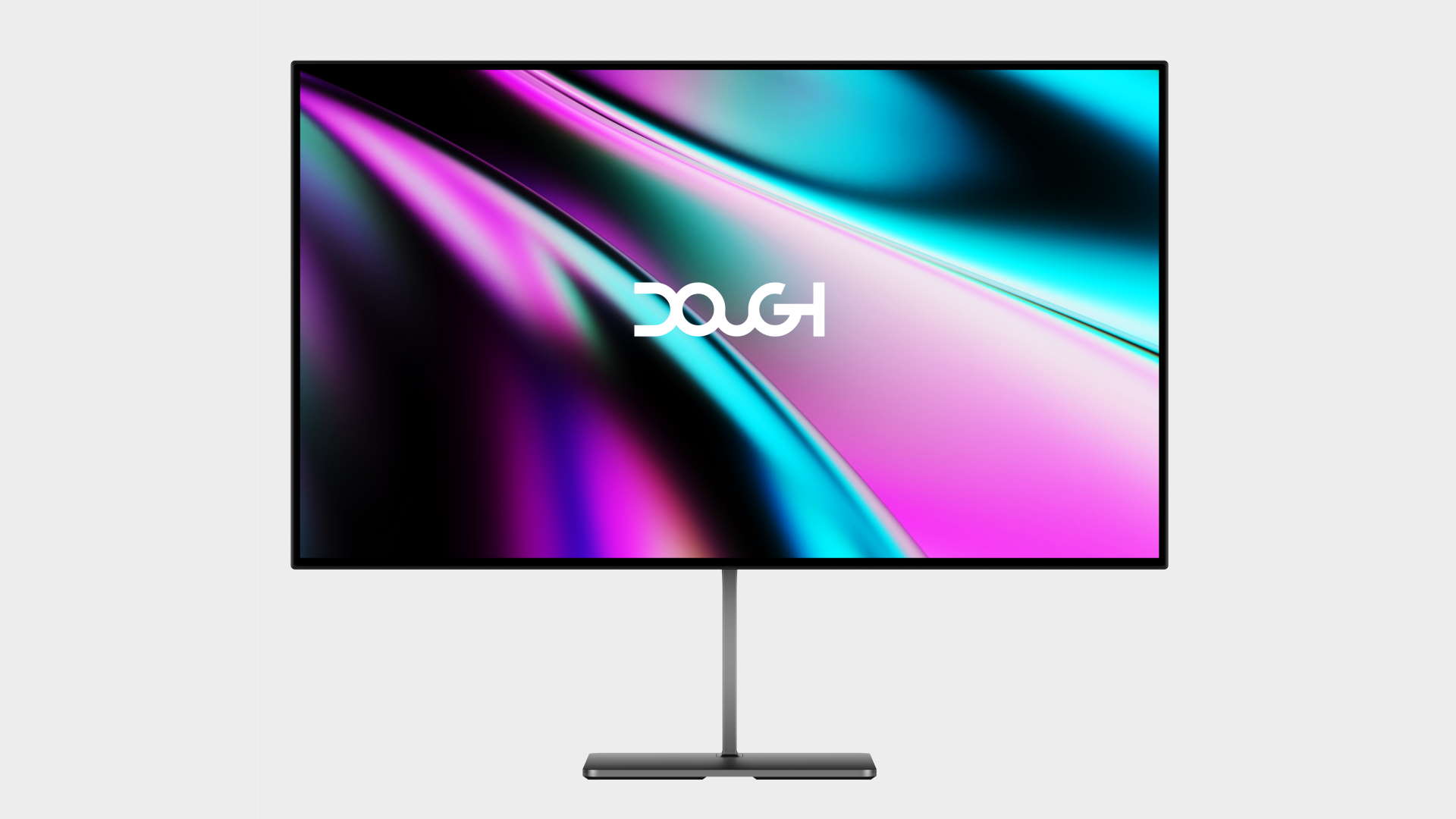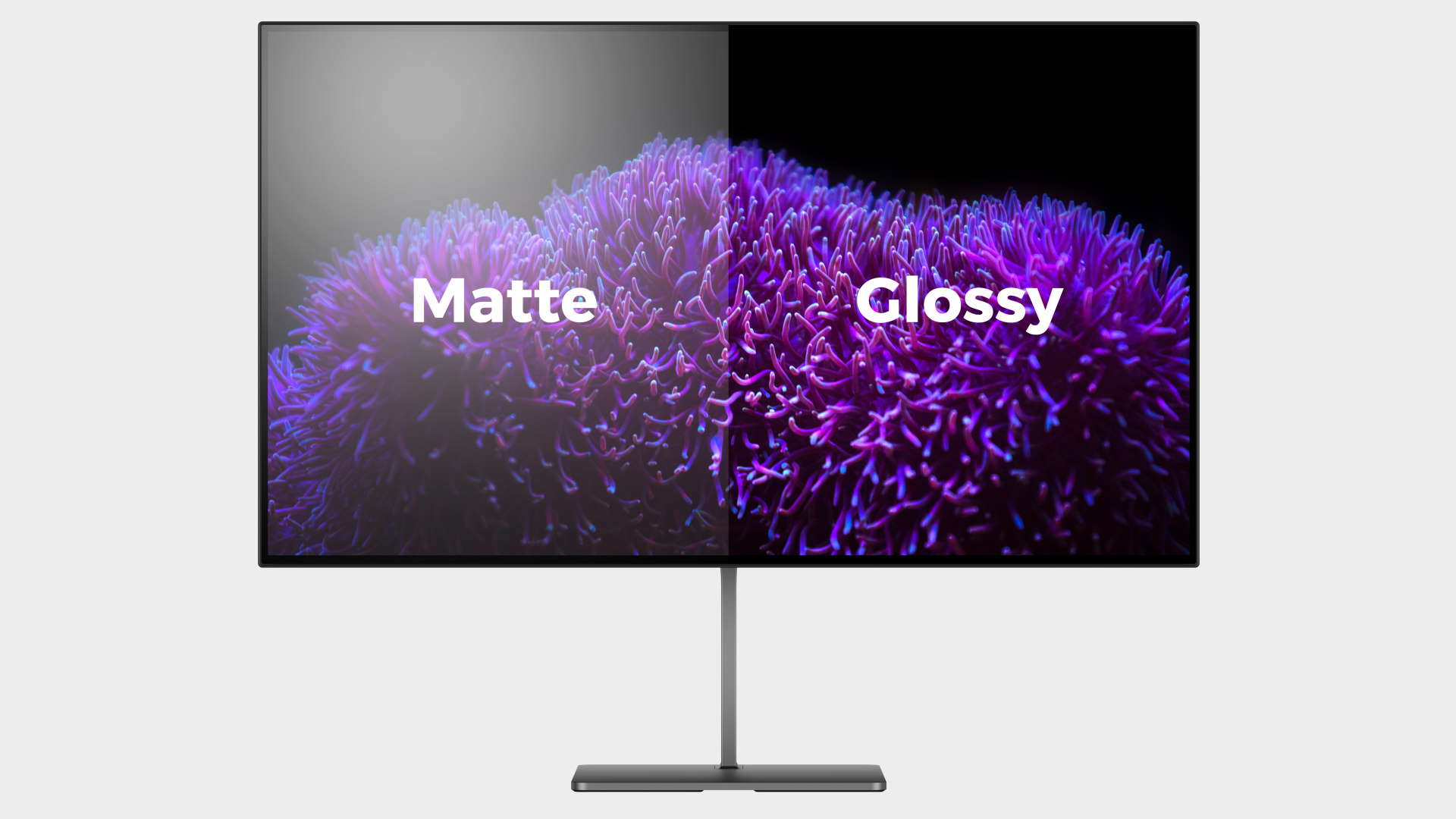The first glossy OLED gaming monitor is coming from weird-name-great-screens Dough
Ignore the doughy name change, the makers of one of the best gaming monitors around is going OLED.

The glossy Dough Spectrum display is probably my favourite gaming monitor of today. Though that might not stand come July next year, when the company has announced it will start to ship its first OLED gaming screen. But, unlike many of the OLED screens you might have seen, or indeed will see as we go into CES and 2023 proper, this is looking like one of the only OLED panel to rock a pin sharp glossy display.
This isn't some 4K panel ripped out of a 40-inch TV and had its electronics removed and a DisplayPort connection jammed in, the Dough Spectrum ES07E2D sports an LG-made panel with a 27-inch diagonal and a 1440p resolution. It's also getting a 240Hz refresh rate, too.
What you're getting is basically the same spec sheet as the LG UltraGear 27GR95QE-B which uses the same OLED panel. We've been maybe a little underwhelmed by the brightness measurements offered by LG regarding this panel, but Dough is suggesting that 150cd/m2 typical will be offset by the ability to hit 1000cd/m2 at its absolute peak.
Combined with the absolute black and practically infinite contrast levels of OLED, that all has the potential to make this a great PC HDR panel. While the DisplayHDR True Black 400 rating might look like the lowest specification the VESA group affords, because of the fact OLEDs can deliver proper black reproduction that certification actually indicates a greater dynamic range than the standard DisplayHDR 1000 rating.

Screen size: 26.5-inch
Panel tech: W-OLED
Ratio: 16:9
Native resolution: 2560 x 1440
Brightness: 150cd/m2 typical
1,000cd/m2 peak
HDR: HDR10, DisplayHDR True Black 400
Colour depth: 10-bit
Contrast ratio: 1,500,00:1 typical
Response time: 0.03ms GtG typical
Refresh rate: 48 - 240Hz
Inputs: 2x HDMI 2.1a, 1x DP1.4, 1x Type-C
Price: $649 (+$99 stand) pre-order, $1,099 final
Being OLED, it also has a phenomenally low response time, with the grey-to-grey measurement coming in at just 0.3ms. Compare that with the fastest VA panels and their vaunted 1ms response times and it's way, way faster. Paired with that 240Hz refresh and this should make for an outstanding gaming monitor.
But why not just go for the LG rather than this smaller company, which still retains some detractors from an abortive and unpleasant venture in tablets a few years back? For a start there's the price. The LG monitor is retailing for a flat $999, while Dough is leaning on the pre-order thing again—as it did with the original 4K IPS Spectrum screens. That means it's cheaper if you're one of the early adopters, like, considerably cheaper.
Dough's upward sliding scale of pricing starts at $649, though if you need the stand that becomes $748. But that is still a lot less than the final sale price, which will actually come in higher than LG at $1,099 when it hits Amazon in July. Though, I will caveat that by stating we don't generally recommend pre-orders without having some experience with a product first.
Keep up to date with the most important stories and the best deals, as picked by the PC Gamer team.
But there's maybe the more important point that LG's screen comes with a standard matte finish, while Dough has canvassed opinion, in its crowd-source-y way, and decided to go with a glossy finish instead. I can attest to the difference in vibrance and clarity that has made to the IPS-based Spectrum—it's one of the reasons that while I had the Alienware 34 OLED on my desk I wasn't as blown away as I was expecting to be. In comparison the difference between matte OLED and glossy IPS wasn't so stark.

PC-dedicated 4K OLED panels aren't around yet, and won't be for a long while; right now it seems they're just too damned dim.
LG wasn't necessarily convinced, however, with Dough telling us that "it was extremely hard to convince LG to apply glossy coating on our display," given how standard the matte finish has become in gaming monitors.
With that you also get a pair of HDMI 2.1a inputs, the ubiquitous DisplayPort 1.4, and a host of extras, such as built-in KVM and a Type-C connection that will deliver 100W of power to your laptop while also acting as a display cable and USB hub.
Though, if you're sat there, wondering whether actually dropping the best part of a grand on an OLED gaming monitor that's only running to a 1440p resolution is actually a backwards step, then I hear you. It is actually the same pixel density as the Alienware ultrawide OLED, and far more than the 45-inch Corsair bendy OLED, but that top-end gaming res is definitely desirable when you're flashing the cash.
Those PC-dedicated 4K OLED panels aren't around yet, and won't be for a long while; right now it seems they're just too damned dim. I asked Dough about the 4K issue specifically and product manager, Rob Windhouwer, explains that: "We know that there is a lot of demand for 32-inch, 4K OLED monitors. At the moment, lack of brightness and pixel size issues prevent such displays from being available. But we expect them to become reality around the second half of 2024, and if we can find a panel that matches the desires of our community, we will of course be one of the first to turn it into an awesome monitor."
So yeah, a full 32-inch 4K OLED gaming monitor is a while off yet, which kinda makes this glossy doughball gaming monitor a far more tempting prospect.

Dave has been gaming since the days of Zaxxon and Lady Bug on the Colecovision, and code books for the Commodore Vic 20 (Death Race 2000!). He built his first gaming PC at the tender age of 16, and finally finished bug-fixing the Cyrix-based system around a year later. When he dropped it out of the window. He first started writing for Official PlayStation Magazine and Xbox World many decades ago, then moved onto PC Format full-time, then PC Gamer, TechRadar, and T3 among others. Now he's back, writing about the nightmarish graphics card market, CPUs with more cores than sense, gaming laptops hotter than the sun, and SSDs more capacious than a Cybertruck.

